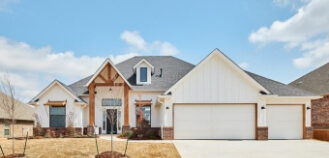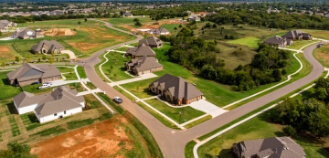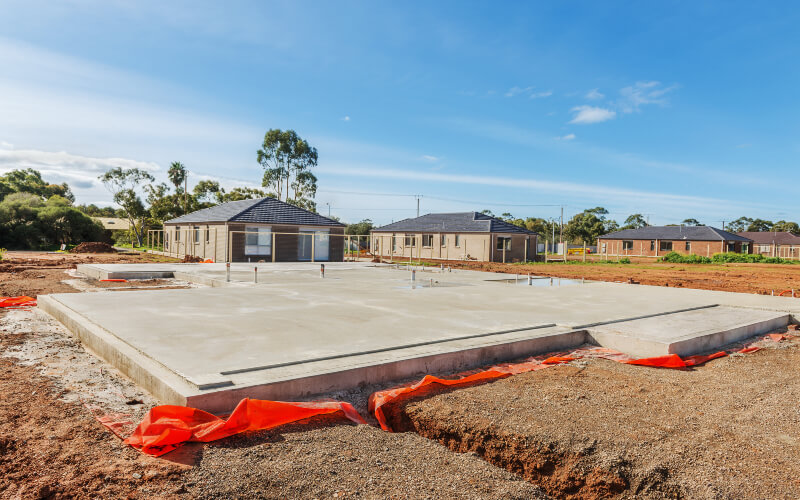What Goes Into Construction Site Preparation?
What’s involved in site preparation for construction? Before a home can be built on a piece of land, the site must be cleared and graded. The soil must also be compacted. Why is site preparation so important? First, it ensures that the site is ready for construction to begin. It also helps minimize the impact of the work being done on the surrounding environment. Properly preparing a construction site makes for easier access and easier movement of materials within the site, which speeds the construction process. What are the factors you need to consider when you want to prepare a site and build a home?
How to Prepare Land for Building a Home
When you are preparing a construction site, you must consider the nature of the project. Whether it’s residential, commercial, or public infrastructure, and the size of the project. It’s also important to factor in the location of the project. Is it in a rural or urban setting? What’s the climate like in that location? Once you have considered these and other major factors, you can follow these steps to prepare your site for building.
- Clear the site. This means removing trees, vegetation, debris, and other obstructions. Normally, this is done using heavy machinery, including excavators and plows.
- Evaluate the site. This requires more than just a cursory inspection while walking around the site. You will need to check the soil; testing it to determine whether or not it can handle the weight of all you intend to put onto it. Items to consider include structures, foundations, and heavy equipment. You will need a geotechnical investigation of the soil, because if it’s the wrong type of soil, it could jeopardize the integrity of your structure. You will also need to make sure that there are no underground obstructions to hamper your construction. This includes underground sewer, gas or electrical lines, as well as natural obstructions.
- Survey the land. Hire a surveyor to determine the boundary lines, as well as the best way to lay out the construction site. Site surveying is required for zoning and permitting purposes, and it helps prepare you for the design phase by showing you where certain structures can be built.
- Plan your design. Once you’ve tested the soil and surveyed the land, you can begin to develop a site design plan. In this plan, the designer will determine precisely where everything goes, including structures, drainage, and septic systems.
- Plan access points. When your design is in place, you can determine where the site access points at the building site and around the job site should be located. Heavy machinery needs to be able to access necessary areas, and you’ll need to provide perimeter access points for workers to move around the site safely. This is when you should determine how many porta-potties are needed on site, and how the site can be managed and accessed most efficiently.
- Install drainage and erosion controls. Before you begin to build, you must have adequate drainage systems and erosion system controls. This can include retention ponds and dewatering of groundwater. It also involves a silt fence installed around the property to make sure construction doesn’t cause erosion of the soil into roads and sewers. It’s important to use best management practices to keep the soil and sediment on the site, stabilize the soil, and mitigate the effects of stormwater runoff.
- Grade and compact the site. This is the final step in preparing a site for a new building, in which earth is moved around to create the desired site conditions. The ground can be excavated using methods like “cut and fill” and “split level,” and then it will need to be compacted to ensure stability.
- Have a safety plan in place. Create a plan to keep everyone safe during construction. Note the types of hazards on site, developing procedures to prevent injuries and reduce exposure to hazards. Make sure you have emergency contact information in all areas of the site. Also, be sure to have contact information for everyone working on site, and ensure you’ve given them proper guidance regarding personal protective equipment to be worn on site.
Custom-Built Homes
Of course, you don’t have to worry about how to prepare land for building a home if you leave the building to the professionals. When you’re ready to build your dream home, Landmark Fine Homes has beautiful new and custom-built homes in a variety of sizes and floorplans, just waiting to become yours. Our homes are energy efficient and built with the utmost attention to detail. Some are located in active adult communities where you’ll find plenty to do. Make your next house the home of your dreams by contacting Landmark Fine Homes today!\







